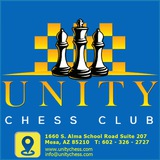📘 37.Nd5?
Wojtaszek has missed an opportunity to win the game.
37.R×d7+! R×d7 38.N×d7 B×d7 39.Bf3 Bc6 40.Kf2 Kf6 41.B×h5! B×e4 42.Bf3! B×f3 43.Kf3 +-
With an easy win due to White's outside passed pawn.
37...B×d5 38.R×d5 Rc4 =
Wojtaszek has missed an opportunity to win the game.
37.R×d7+! R×d7 38.N×d7 B×d7 39.Bf3 Bc6 40.Kf2 Kf6 41.B×h5! B×e4 42.Bf3! B×f3 43.Kf3 +-
With an easy win due to White's outside passed pawn.
37...B×d5 38.R×d5 Rc4 =
📘 19.Rd2!
Carlsen's excellent move in order to get rid of the pin with Qd1.
19...Rae8 20.Qd1! b6 21.Re1 h6 22.B×c5 d×c5 23.Re3
Carlsen's excellent move in order to get rid of the pin with Qd1.
19...Rae8 20.Qd1! b6 21.Re1 h6 22.B×c5 d×c5 23.Re3
📘 27...B×c4??
Topalov should have played 27...Kf8. A prophylactic move to prevent White from playing Re8+.
28.R×d6 Q×d6 29.Re8+ R×e8 30.Q×d6 R×e4 31.Q×c6 +-
Topalov should have played 27...Kf8. A prophylactic move to prevent White from playing Re8+.
28.R×d6 Q×d6 29.Re8+ R×e8 30.Q×d6 R×e4 31.Q×c6 +-
📘 Carlsen finds an easy way to break the fortress.
54.Kf4! Rf6 55.Ke5 Rh6 56.Qe6 +-
54.Kf4! Rf6 55.Ke5 Rh6 56.Qe6 +-
📕This exercise is really quite simple. The light-squared bishop is not too impressive and has little scope for improvement, while White's other bishop is superior. Therefore the following exchange sacrifice, creating a formidable center, is quite logical.
21...Nxe4! 22.Qxc2 Rxc2 23.Bd3 Rxb2 24.Rxb2 Nc5
Black has compensation and is perhaps even a little better already. Either way, the position is more difficult to play for White in practice. Neither his bishop nor his rooks have any good squares.
21...Nxe4! 22.Qxc2 Rxc2 23.Bd3 Rxb2 24.Rxb2 Nc5
Black has compensation and is perhaps even a little better already. Either way, the position is more difficult to play for White in practice. Neither his bishop nor his rooks have any good squares.
📕The important factor is that none of White's pieces other than the knight needs improving, and as there is no reason to alter the pawn structure this should be done immediately.
14.Nd1! Bg4 15.e4 c6 16.Ne3 +/=.
14.Nd1! Bg4 15.e4 c6 16.Ne3 +/=.
Unity Chess Multiple Choice 403
A: Qb3 – 2
👍👍👍👍👍👍👍 50%
C: Rc6 – 2
👍👍👍👍👍👍👍 50%
B: e×f7
▫️ 0%
👥 4 people voted so far.
A: Qb3 – 2
👍👍👍👍👍👍👍 50%
C: Rc6 – 2
👍👍👍👍👍👍👍 50%
B: e×f7
▫️ 0%
👥 4 people voted so far.
Unity Chess Multiple Choice 404
A: Rab1 – 2
👍👍👍👍👍👍👍 50%
C: Rfb1 – 2
👍👍👍👍👍👍👍 50%
B: Rad1
▫️ 0%
👥 4 people voted so far.
A: Rab1 – 2
👍👍👍👍👍👍👍 50%
C: Rfb1 – 2
👍👍👍👍👍👍👍 50%
B: Rad1
▫️ 0%
👥 4 people voted so far.
🅾️ #about_Lasker
🔹 Emanuel Lasker
🔹 German Chess Master
♦️ Emanuel Lasker was a German chess player, mathematician, and philosopher who was World Chess Champion for 27 years. In his prime, Lasker was one of the most dominant champions, and he is still generally regarded as one of the strongest players ever.
▪️ Full name: Emanuel Lasker
▪️ Country: Germany
▪️ Born: December 24, 1868
Berlinchen, Prussia (now Barlinek, Poland)
▪️ Died: January 11, 1941 (aged 72)
New York City, United States
▪️ World Champion: 1894–1921
♦️ Lasker's contemporaries used to say that he used a "psychological" approach to the game, and even that Lasker sometimes deliberately played inferior moves to confuse opponents. Recent analysis, however, indicates that he was ahead of his time and used a more flexible approach than his contemporaries, which mystified many of them. Lasker knew contemporary analyses of openings well but disagreed with many of them. He published chess magazines and five chess books, but later players and commentators found it difficult to draw lessons from his methods.
♦️ Lasker made contributions to the development of other games. He was a first-class contract bridge player and wrote about bridge and other games, including Go and his own invention, Lasca. His books about games presented a problem that is still considered notable in the mathematical analysis of card games.
♦️ A memorable game by Lasker which known "Max Out" in chessgames.com site👇🏼
🔸 Max Euwe vs Emanuel Lasker
🔸 Zurich (1934), Zurich SUI, rd 1, Jul-14
🔸 Queen's Gambit Declined: Modern. Knight Defense (D51)
♦️Review and download PGN file👇🏼
@unitychess
🔹 Emanuel Lasker
🔹 German Chess Master
♦️ Emanuel Lasker was a German chess player, mathematician, and philosopher who was World Chess Champion for 27 years. In his prime, Lasker was one of the most dominant champions, and he is still generally regarded as one of the strongest players ever.
▪️ Full name: Emanuel Lasker
▪️ Country: Germany
▪️ Born: December 24, 1868
Berlinchen, Prussia (now Barlinek, Poland)
▪️ Died: January 11, 1941 (aged 72)
New York City, United States
▪️ World Champion: 1894–1921
♦️ Lasker's contemporaries used to say that he used a "psychological" approach to the game, and even that Lasker sometimes deliberately played inferior moves to confuse opponents. Recent analysis, however, indicates that he was ahead of his time and used a more flexible approach than his contemporaries, which mystified many of them. Lasker knew contemporary analyses of openings well but disagreed with many of them. He published chess magazines and five chess books, but later players and commentators found it difficult to draw lessons from his methods.
♦️ Lasker made contributions to the development of other games. He was a first-class contract bridge player and wrote about bridge and other games, including Go and his own invention, Lasca. His books about games presented a problem that is still considered notable in the mathematical analysis of card games.
♦️ A memorable game by Lasker which known "Max Out" in chessgames.com site👇🏼
🔸 Max Euwe vs Emanuel Lasker
🔸 Zurich (1934), Zurich SUI, rd 1, Jul-14
🔸 Queen's Gambit Declined: Modern. Knight Defense (D51)
♦️Review and download PGN file👇🏼
@unitychess
